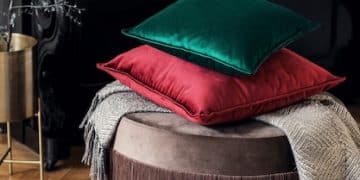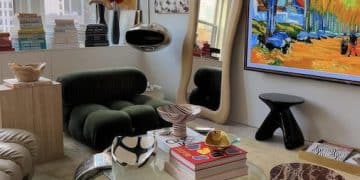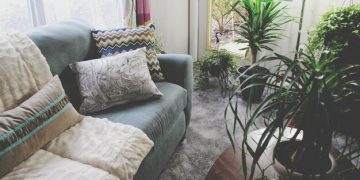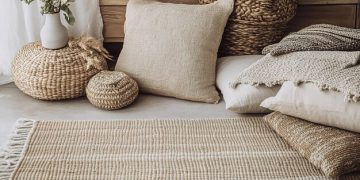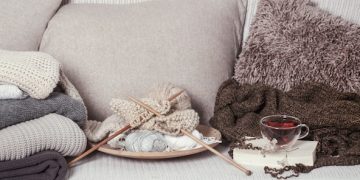Accessorize Like a Pro: Home Decor Accents Guide
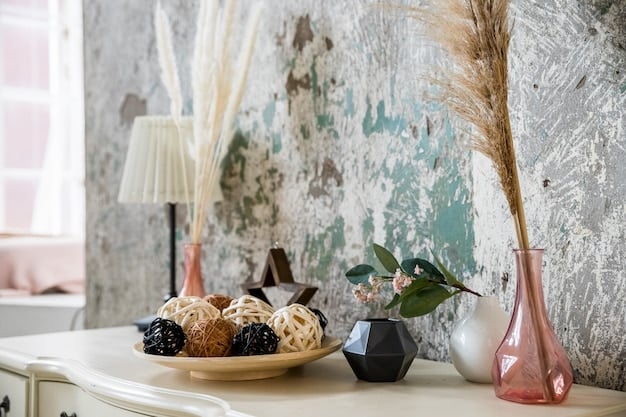
Accessorizing your home is an art form that involves selecting the perfect accents to reflect your personality and enhance the overall aesthetic, turning a house into a personalized haven, offering comfort and style.
Transforming a house into a home is about more than just furniture; it’s about the details. Learning to Accessorize Like a Pro: The Art of Choosing the Perfect Home Decor Accents can elevate your living space, reflecting your unique personality and style.
Why Home Decor Accents Matter
Home decor accents are the finishing touches that bring a room together. They add personality, texture, and color, creating a cohesive and inviting atmosphere. But beyond aesthetics, accents can also serve practical purposes, enhancing the functionality and comfort of your space.
Creating a Cohesive Look
Accents play a vital role in tying different elements of a room together. They help create a sense of harmony and balance by complementing the existing furniture and color scheme.
Adding Personality and Style
Your choice of accessories is a reflection of your personal taste. Whether you prefer minimalist decor, bohemian vibes, or classic elegance, carefully selected accents can express who you are and what you love.
- Personal Expression: Accents allow you to showcase your unique taste and interests.
- Emotional Connection: Well-chosen items can evoke positive memories and feelings.
- Creating a Narrative: Displaying collections or travel souvenirs adds a personal story to your home.
Ultimately, the magic of home decor accents lies in their ability to transform any space into a personalized sanctuary. With careful planning, you will be able to craft a living environment where you’re most comfortable and at peace.
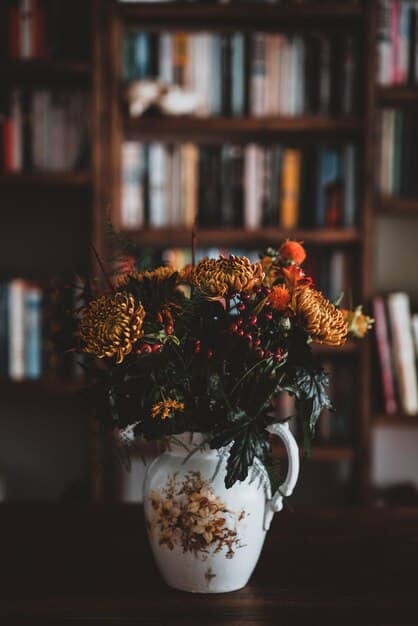
Key Types of Home Decor Accents
From textiles to artwork, the world of home decor accents is vast and varied. Understanding the different types of accents and their unique contributions can help you make informed choices and create a well-rounded, visually appealing space.
Textiles: Adding Warmth and Texture
Textiles are essential for adding comfort, warmth, and texture to a room. They include items like throw pillows, blankets, rugs, curtains, and upholstery.
Textiles play a pivotal role in defining the overall mood of the room. For example, an airy throw draped over the sofa can evoke warmth and comfort, drawing you to the space. Similarly, the presence of plush rugs softens hard flooring while introducing visual depth and interest.
- Throw Pillows: Instantly update a sofa or chair with different colors, patterns, and textures.
- Rugs: Define spaces, add warmth, and introduce patterns or textures to the floor.
- Curtains: Soften the light, add privacy, and frame windows beautifully.
Selecting the perfect array of home textiles means carefully weighing each element’s impact within the overall plan. Thoughtful considerations like color story and material will help ensure these comfortable pieces add a welcoming aura to the room.
Lighting: Setting the Mood
Lighting is more than just functional; it’s a crucial element in setting the mood and ambiance of a room. Different types of lighting can create different effects, from bright and energizing to soft and relaxing.
Lighting offers immense freedom to adjust the style and atmosphere of an interior. Smartly positioned table lamps and standing lights can transform gloomy corners into warmly lit nooks. Sconces also introduce a designer’s touch to hallway walls, casting an appealing glow.
Types of Lighting
There are three main types of lighting: ambient, task, and accent. Each serves a different purpose and contributes to the overall lighting scheme.
Ambient Lighting
Provides overall illumination and sets the general mood of the room. Examples include ceiling lights, chandeliers, and recessed lighting.
- Task Lighting: Focuses light on specific areas for activities such as reading or cooking. Desk lamps, pendant lights over kitchen islands, and under-cabinet lighting fall into this category.
- Accent Lighting: Highlights specific features such as artwork, architectural details, or decorative objects. Spotlights, track lighting, and picture lights are great options.
- Choosing the Right Bulbs: Different types of bulbs emit different colors and intensities of light. LED bulbs are energy-efficient and come in a range of color temperatures, from warm white to cool white.
The effect is truly remarkable when these lights are used in harmony. It’s so important to invest some time considering the overall result when choosing the right accessories for the home. The end result is always worth it.
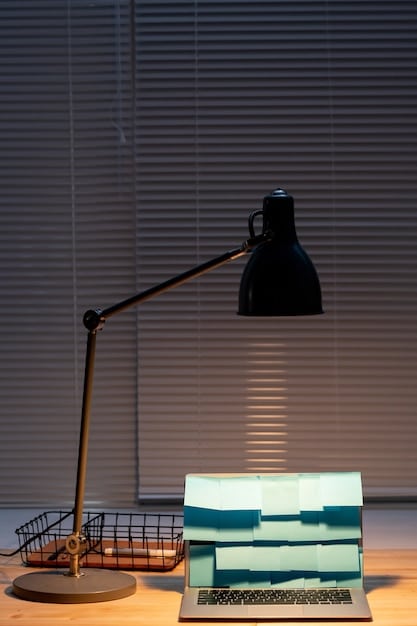
Color Coordination: Creating Harmony
Color is one of the most powerful tools in a designer’s arsenal. The careful coordination of colors will establish the ambiance of a room, reflect individual style and complement the furnishings.
Understanding Color Schemes
There are several basic color schemes that can serve as a foundation for your decor. An understanding of these color schemes will guide your choices, but it is always a good idea to allow your personality to shine through while making your decisions.
Monochromatic
Uses different shades and tints of a single color to create a cohesive and sophisticated look.
Complementary
Combines colors from opposite sides of the color wheel for a bold and vibrant effect.
- Analogous: Uses colors that are next to each other on the color wheel for a harmonious and calming feel.
- Triadic: Involves three colors that are evenly spaced on the color wheel for a balanced and lively palette.
- Neutral: Relies on a palette of whites, grays, beiges, and blacks, allowing textures and forms to take center stage.
Combining analogous colors with textures and lighting techniques can also create a peaceful haven that suits individual needs. It is important to be aware of the impact of certain colors on overall mood while choosing a color scheme.
Balancing Form and Functionality
Home decor accents should always be stylish, but it is also essential to consider the functionality. The perfect home accents will enhance aesthetic appeal while serving an important purpose.
Often the accessories themselves can provide a convenient organization tool to keep the home looking perfect at all times. With this in mind, choosing dual-purpose items is a good idea.
Multipurpose Furniture
Choose furniture that offers both style and storage. Ottomans with hidden compartments, coffee tables with drawers, and bookshelves with doors are excellent choices.
Decorative Storage
Use decorative baskets, boxes, and trays to organize clutter while adding visual interest to your shelves and countertops.
- Wall-Mounted Organizers: Maximize vertical space with shelves, hooks, and organizers for storing items such as keys, mail, and accessories.
- Stylish Desk Accessories: Keep your workspace tidy with elegant pen holders, file organizers, and desk lamps that blend form and function.
- Smart Tech Integration: Incorporate smart home devices that enhance convenience and efficiency, such as smart lighting, thermostats, and speakers.
Considering the form and functionality of all accessories together will result in a comfortable and convenient living space. The important thing is to create a space that fits individual needs.
Creating a Focal Point
A focal point is the main point of interest in a room, drawing the eye and setting the overall tone. Whether it’s a striking work of art, a bold piece of furniture, or a unique architectural feature, the focal point should be the star of the show.
By creating a single, striking focal point, the rest of the accessories can serve as complementary additions, contributing to a pleasing sense of order and harmony within the room.
Choosing Your Focal Point
Consider the existing features of your room when choosing your focal point. A fireplace, a large window with a view, or an interesting architectural detail are all great candidates.
Highlighting Artwork
Use lighting to accentuate the colors, textures, and overall impact of the artwork. Spotlights, track lighting, and picture lights are ideal for this purpose.
- Furniture Arrangement: Arrange your furniture to draw attention to the focal point. Place seating facing the fireplace or angle a sofa towards the window with a view.
- Decorative Groupings: Create a vignette on a mantelpiece, console table, or bookshelf to draw the eye. Use a mix of objects with varying heights, shapes, and textures to create visual interest.
- Color Contrast: Use color to highlight your focal point. Paint the wall behind a piece of artwork a contrasting color or use colorful accessories to draw attention to a key piece of furniture.
A room comes alive when you establish a commanding focal point, which will then establish a mood with the clever use of accessories. All these things together are guaranteed to create a well-balanced and aesthetically pleasing living space.
| Key Point | Brief Description |
|---|---|
| 💡 Textiles | Add warmth and texture with items like pillows, blankets, and rugs. |
| 🎨Color Coordination | Use color schemes to create a harmonious and inviting atmosphere. |
| ✨ Lighting | Set the mood with ambient, task, and accent lighting. |
| 🎯 Focal Point | Create a main point of interest in the room. |
FAQ
▼
Start with textiles like throw pillows and rugs, as they easily add warmth and personality. Then, consider lighting and artwork to enhance the ambiance and focal points.
▼
Consider your existing color scheme and personal preferences. Use color schemes like monochromatic, complementary, or analogous to create harmony.
▼
Lighting sets the mood and ambiance of a room. Use ambient, task, and accent lighting to create different effects and highlight key features.
▼
Choose furniture and accessories that offer both style and storage. Decorative baskets, multipurpose furniture, and smart tech integration are great options.
▼
Choose a main point of interest, such as a fireplace or artwork. Arrange furniture to draw attention to it and use lighting to highlight its features.
